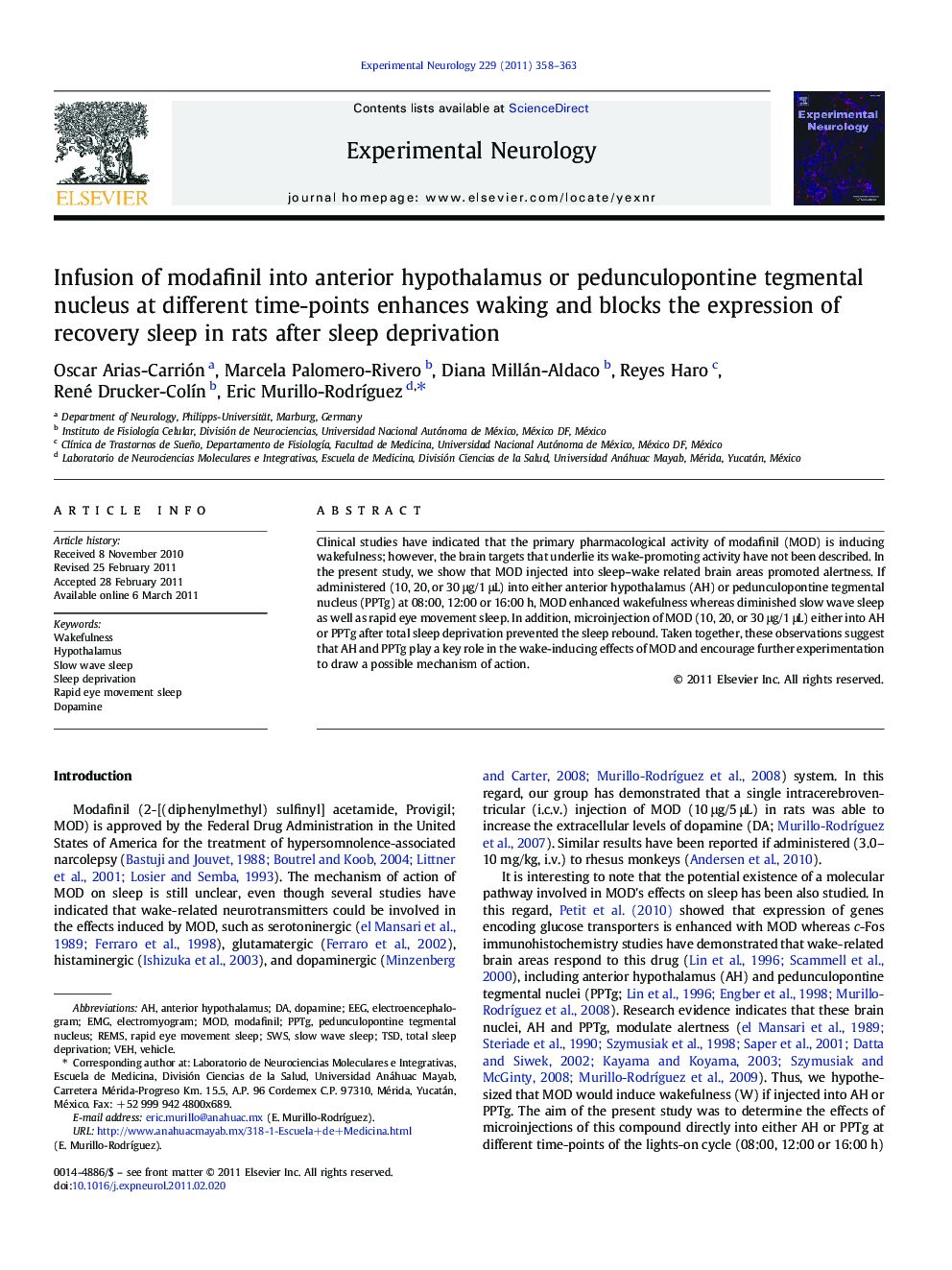| Article ID | Journal | Published Year | Pages | File Type |
|---|---|---|---|---|
| 3055812 | Experimental Neurology | 2011 | 6 Pages |
Clinical studies have indicated that the primary pharmacological activity of modafinil (MOD) is inducing wakefulness; however, the brain targets that underlie its wake-promoting activity have not been described. In the present study, we show that MOD injected into sleep–wake related brain areas promoted alertness. If administered (10, 20, or 30 μg/1 μL) into either anterior hypothalamus (AH) or pedunculopontine tegmental nucleus (PPTg) at 08:00, 12:00 or 16:00 h, MOD enhanced wakefulness whereas diminished slow wave sleep as well as rapid eye movement sleep. In addition, microinjection of MOD (10, 20, or 30 μg/1 μL) either into AH or PPTg after total sleep deprivation prevented the sleep rebound. Taken together, these observations suggest that AH and PPTg play a key role in the wake-inducing effects of MOD and encourage further experimentation to draw a possible mechanism of action.
Graphical abstractFigure optionsDownload full-size imageDownload as PowerPoint slideResearch Highlights► Modafinil increases waking if injected into hypothalamus. ► Modafinil enhances waking if injected into PPTg. ► Sleep rebound is blocked after modafinil injection into hypothalamus or PPTg.
